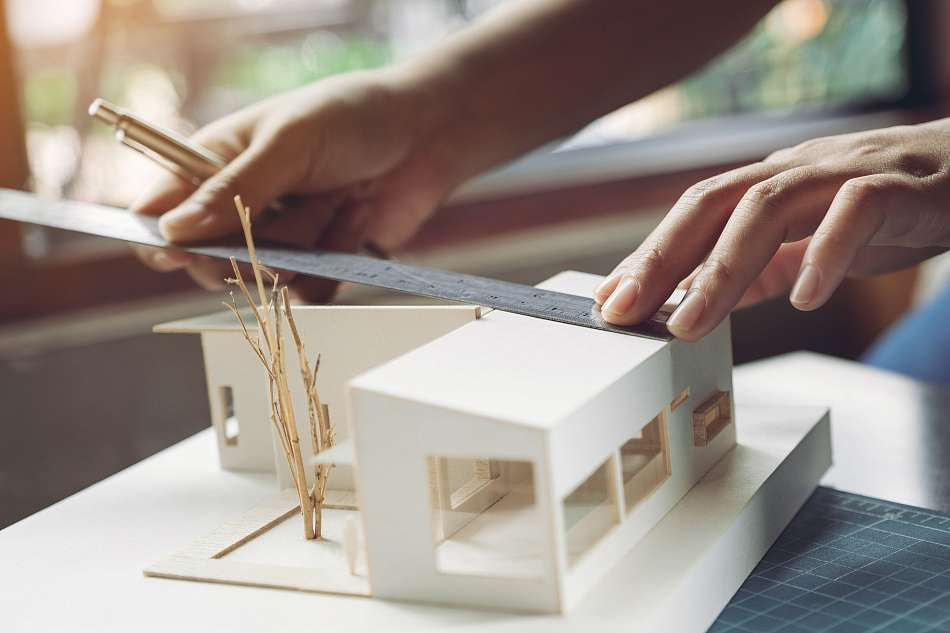
Construction on the Côte d'Azur
With our help you can successfully solve a number of issues, such as obtaining building rights or demolition of a house, changing the purpose of the property, increasing the living space, installing an elevator, classic renovation or large-scale construction work. At the same time we are not a construction company, because together with the client we want to have a choice, between different solutions provided by different architects, a choice between construction companies, each with their own quality, features and prices, between specialists in different fields.
We have been successfully providing this type of construction service to our management customers for more than 15 years. Our work on behalf of the customer is particularly appreciated, as we think like a customer and monitor the quality of work, reporting regularly to the customer. Construction companies, architects, town halls, know us and see us as an expert and the owner’s confidant interested in the result.

To gain a clear understanding of what is legally permissible in terms of building, expanding, or altering a house, particularly before starting any construction, we highly recommend conducting a feasibility study with an architect. This study, termed 'Feasibility Study' or 'Etude de faisabilité,' is crucial in determining the allowable scope for future construction. It considers landscape and architectural design aspects in line with local regulations. The study serves several key purposes:
- Evaluating the project's feasibility, including its scope and constraints.
- Gathering detailed information about the site and existing structures.
- Developing solutions to optimize the project's execution.
- Identifying essential parties involved in the project.
- Conducting a comprehensive risk assessment of the project.
- Providing an estimate of the project's costs.

Engaging an architect is crucial for various construction phases. They're invaluable for assessing the property's potential, creating architectural and design plans, obtaining building permits, preparing construction blueprints, and ensuring that construction aligns with these plans. To apply for construction or demolition rights, the architect fills out a detailed application and submits a dossier to the local municipality, including all plans. A land surveyor, or géomètre-topographe, then aligns these plans with the actual site and structure, mapping out the property boundaries and topographical elevations in 2D and 3D. If property boundaries are uncertain, the surveyor conducts a detailed re-survey. The local municipality provides an urbanism certificate, detailing the precise boundaries upon the buyer's request.

A well-formulated project that adheres to local norms and presents an appealing, environmentally conscious design can significantly boost the chances of approval from municipal authorities. This process involves submitting a comprehensive application, including the necessary documents, to the local city hall. The application is registered within 15 days of submission, and a response is expected within two months. If the city hall does not respond within this timeframe, permission is granted by default.
Projects near protected historical sites or nature reserves require additional oversight, typically by the State Architect (ABF or Architecte Batiment de France). These scenarios may extend the review process by up to three months, often necessitating further justifications and potential compromises from the property owner.

On the French Riviera, not all land is designated for building. The local urban planning document, PLU (Plan Local de l’Urbanisme), determines if construction is permissible. Each plot has a specific development coefficient, COS (Coefficient d’Occupation des Sols), dictating the allowable building area, measured as SHON (Surface Hors-Oeuvre Nette).
The land purchase process in France mirrors the general real estate buying procedure: it begins with a preliminary sale agreement, stipulating the plot's buildable area and the conditions necessary for sale completion, including obtaining an urbanism certificate, a building permit, and, if needed, loan approval. It's advisable not to enter into a construction contract before acquiring legal ownership of the land.
The urbanism certificate (certificat d’urbanisme) outlines any administrative restrictions on ownership, local urban planning directly affecting the plot, and applicable taxes and fees. It clearly defines the rights and responsibilities associated with owning the land.
If you have any doubts or clarifying questions, please contact our specialists and get a personalized offer.


